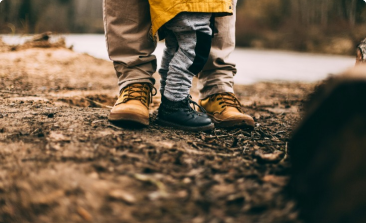Toddlers’ Development And What To Expect
Development is how your child grows physically, mentally and emotionally and learns to communicate, think and socialise. Children’s early experiences and relationships in their first five years are most critical for their development.
In the early years, your child’s main method for development and learning was through constant play. Other factors which influences development are genes, nutrition, physical activity, health and community.
The term ‘development’ means changes in your child’s physical, emotional, social growth along with growth of communication, behaviour and thinking skills. All of these areas of development are linked to each other and also depends on the influence of others.
In the first five years of life, experiences and relationships stimulate children’s development. In fact, studies have shown that a child’s brain develops connections faster in the first five years than any other time in their entire life. Millions of connections are created in their brain at this age.
This is the perfect time for laying down the foundations for learning, health and behaviour that will last with them for the rest of their lives. Babies are born ready to learn, and their brains develop through usage. Stimulating and caring environments with lots of activities to participate in, give children plenty of ways to play, interact, develop and learn and numerus changes for them to practise what they have learnt.
RELATIONSHIPS
It is the foundation of child’s development. Children’s relationships affect all areas and stages of their development. Through their relationships, children learn vital information about the world they are living in. For example, your child learns whether they are loved, whether the world they are a part of is safe and secure, who cares for them, is it okay to laugh or cry and much more.
An important part of their development is noticing others’ relationships and behaviour, for instance how you treat or behave with your family members and those elder to you. This learning is the basis for your child’s development in communication, behaviour, social and other skills.
Your child’s relationship with you is one of the most important and the most important at that age. Relationships with other family members, carers including early childhood educators and other children are also very important for their proper development.
PLAY
In the early years, playing is a child’s main way of learning and developing. Play is fun for them. It is provides ample opportunities for them to explore, observe, experiment and solve problems. It is essential for them to receive your support, encouragement and guidance to do this.
But it is also important to aim for a balance between supporting your child and letting your child tr stuff on their own and sometimes make mistakes. Finding out for themselves about how the world works is a big part of your child’s learning.
Lots of time spent playing, talking, listening, observing and interacting with you helps your child develops some important life skills. These skills include communicating, thinking, solving problems, rectifying mistakes, moving and being with other people and children.
Play is a great relationship builder. Playing with our child makes them understand a very important message that is you are very important to them. This message helps them learn who they are and where do they fit in this world.
OTHER FACTORS
Your child’s genes and other factors like healthy eating, physical activity, health and neighbourhood you live in also influence your child’s development and wellbeing.
Healthy Eating
Healthy food provides your child with energy and nutrients that is essential for their growth and development. It also helps them develop a sense of taste. Healthy family food and eating patterns in the early years can set up healthy eating habits for life.
Physical Activity
Being active physically is vital to your child’s health. It gets your child moving, develops motor skills, helps your child think and gives your child an opportunity to explore their world. So, it is important for your child to receive plenty of opportunities for active play, both inside and outside.
HealthMinor childhood illnesses like colds, ear aches and gastroenteritis generally won’t have any long-term effects on development. But disability, developmental delay and chronic or long-term conditions can affect development. Health and disability professionals can help you understand your child’s condition and how it affects development.
Neighbourhood and Local Community
Your child’s development is primarily supported by positive relationships with you, other family members and carers. It is also a fact that relationships with friends and neighbours and access to playgrounds, parks, shops and local services like play groups, kindergartens, child care centres, schools, health care and libraries.
DEVELOPMENT DIFFERENCES
In general, development happens in the same order in most children, but skills might develop at different ages or times. For example, children usually learn to stand, and then they learn to walk. But this development can happen any time between 8 and 18 months.
So, if you’re wondering whether your child’s development is on track, just remember that development happens over time. Differences among children are usually nothing to worry about.















































